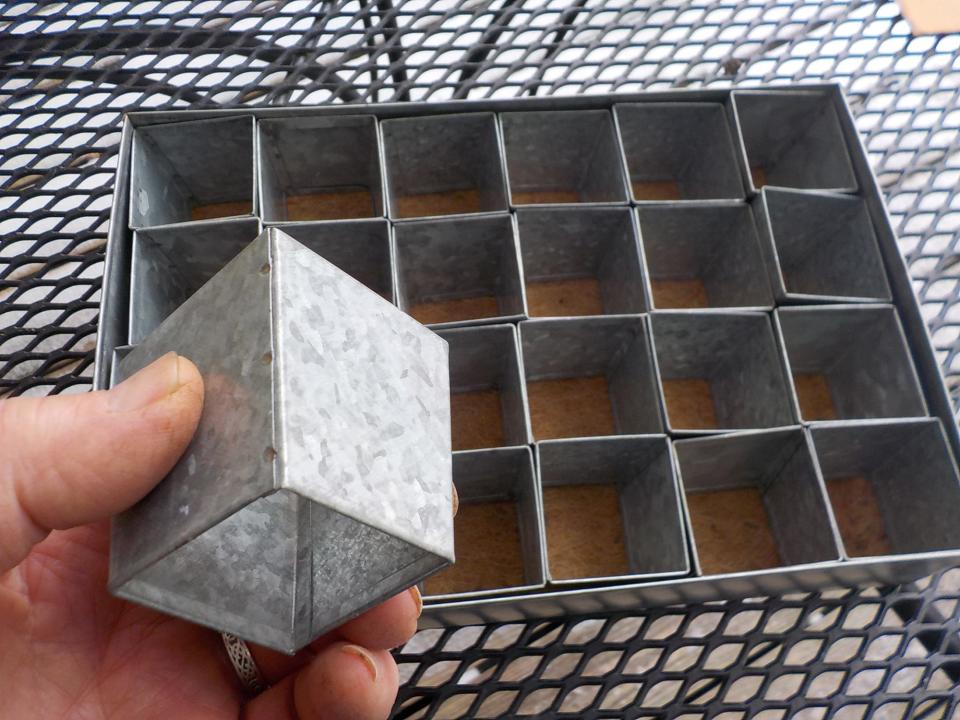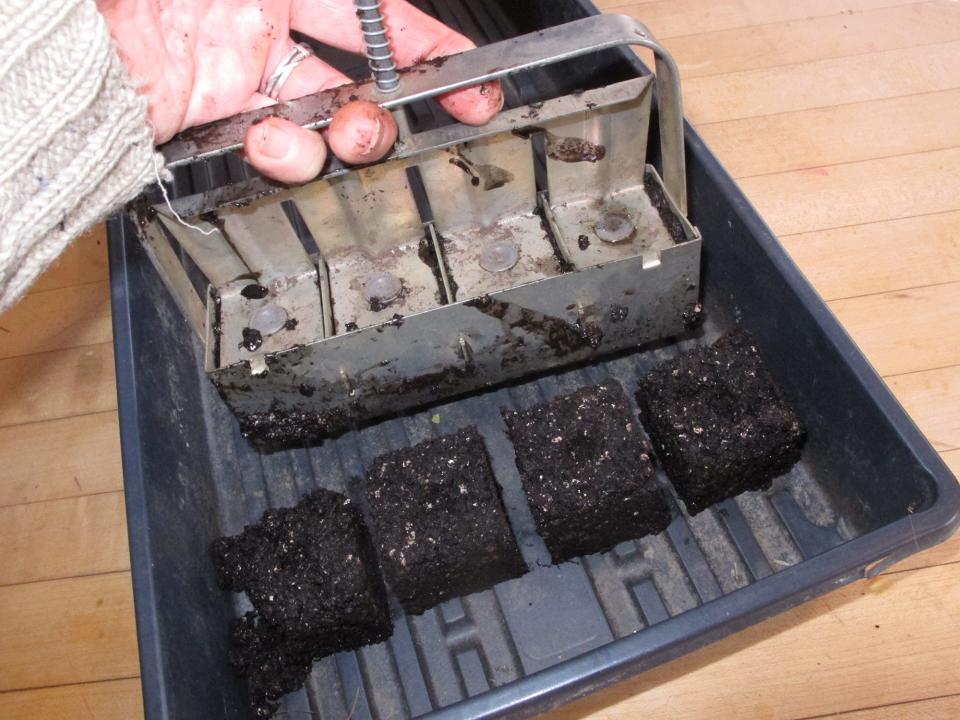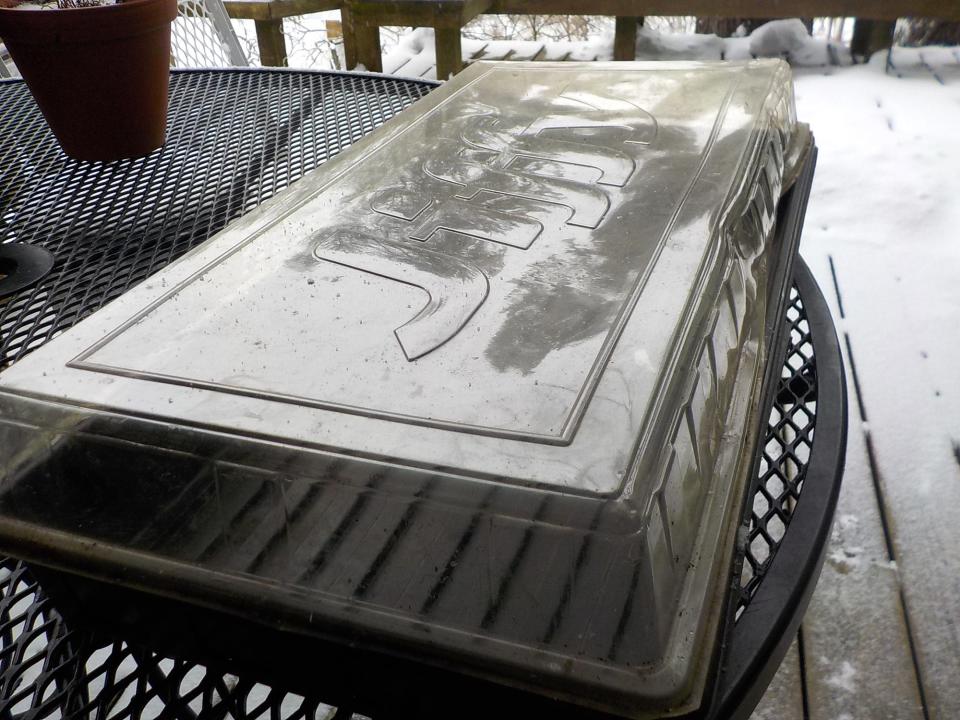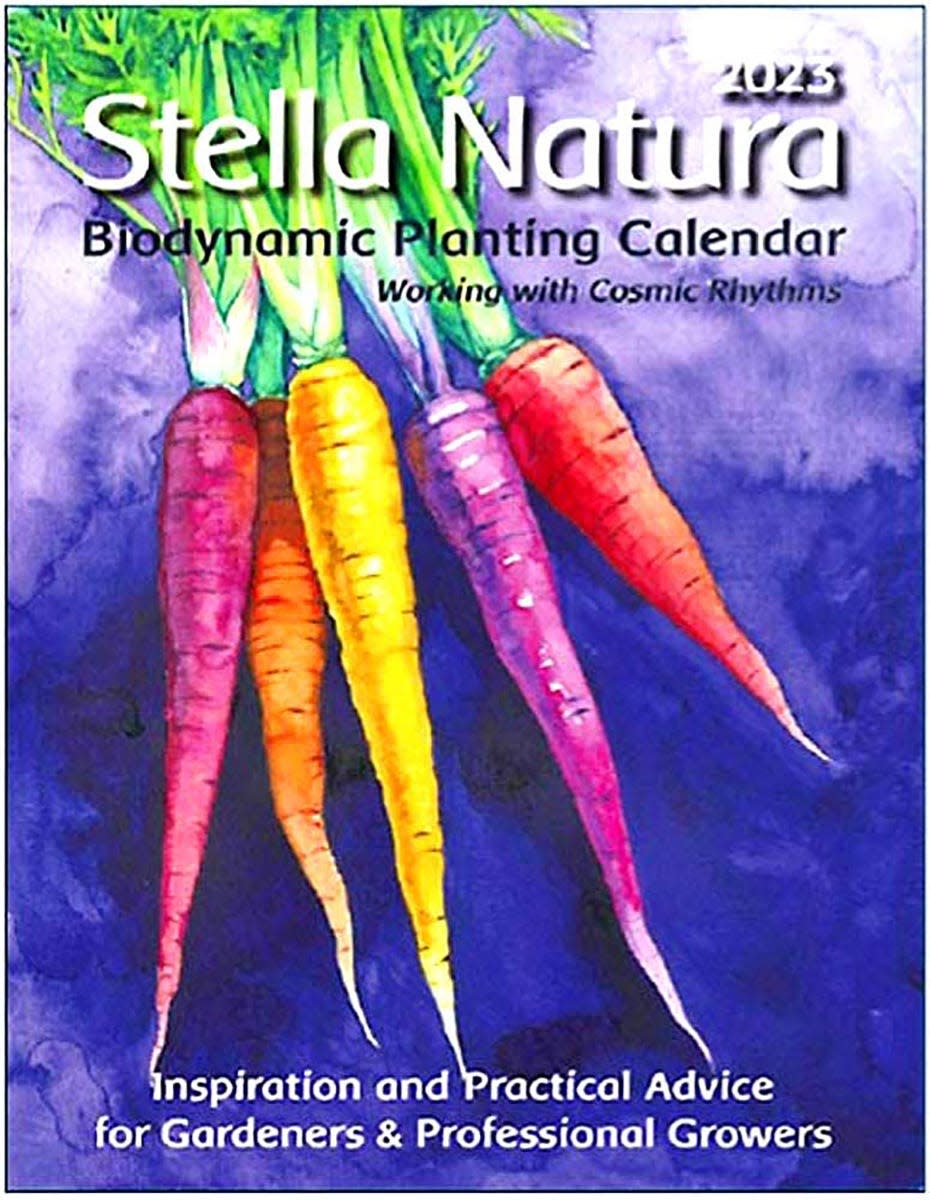Henry Homeyer: Eco-friendly ways to start your seedlings indoors
Starting seeds indoors, under lights, is a good treatment for the winter blues. It connects you to your upcoming garden and all its benefits. Early March is when I start onions and peppers, though April is the month for most everything else.
My wife, Cindy Heath, and I are making a commitment to reduce/eliminate the use of plastics in our life, so we are transitioning away from those handy, dandy flimsy plastic six-packs for starting seeds. You can, too.
Gardener's Supply Company has been offering ways to reduce single-use plastics such as those six-packs that are sold everywhere. They have sturdy reusable plastic trays for seed starting that have been available for a few years. This year, they came out with metal seed-starting trays.
These galvanized-steel growing cells are pricey, but they should last a lifetime. For about $50 you get 24 individual, tapered cells and a leak-proof tray to hold them. The cells are big. The kit is self-watering; it comes with a wire grid and a moisture-retaining mat that keeps seedlings hydrated from the bottom of the tray. You fill it with water once a week or so. I got one of these kits, and it looks like a winner.
Henry Homeyer:What are the benefits of organic vs. chemical soil treatment?

Renee’s Garden is now selling seed-starting cell trays made of silicone that are sturdy and reusable, and dishwasher safe. They do not get brittle, they say. I am ordering some to try them.
Other helpful accessories: A metal press to make soil blocks, LED growing lights
If you don’t mind extra work and lots of mess, you can make soil blocks using a little metal press that produces 2-inch soil blocks. The mixture includes peat humus, compost, soil, blood meal and minerals. You can email me for more information about the process.
You will also need lights, growing medium and seeds. Let’s start with lights. To keep your light bill low, I recommend using LED lights. I have some old-fashioned 4-foot fluorescent lights, but I've been replacing them with the LED equivalent. These look about the same but have no ballast (transformer) inside the fixture, so they use much less electricity.

If you replace your old fixtures, don’t just throw the old tubes into the trash, as they contain mercury — which is toxic waste. Some recycling centers will accept them, or you can bring them to an electrical supply company for proper disposal. If you want to use an LED tube in an old fluorescent fixture, you should remove the ballast. If it says “no PCBs" on it, it also needs to be sent to a hazardous waste collection site also.
Hang your fixture about 6 inches over the planting trays. Use a “jack chain,” a small-link chain, sold at hardware stores. It allows you to raise the lights as your plants grow. Give your seedlings 12 to 14 hours of light per day — they need a good night’s sleep just as much as you do.
Henry Homeyer:Which cut flowers last the longest? Tips for making your bouquet last
Most seeds will wake up and grow more readily if you place them on a warm base. Electrical seed-starting mats are great for that, but they're not really necessary. I use them for plants that specify warmer temperatures, like the flower Lisianthus, and for hot peppers.
What kind of soil is best for starting seeds indoors?
I recommend buying “seed starting mix” instead of “potting soil” to put in your planting cells. Seed starting mix is a finer blend and works better. It is made from peat moss, vermiculite, perlite and fertilizer. You can make your own, of course, and I often do. I start 10 flats (trays) or more each year. I also mix in some high-quality compost — about 50% of the final product, and I add a little Pro-Gro, a slow-release organic bagged fertilizer.

Peat moss is coming under criticism now by the eco-minded community. It is harvested from bogs and is centuries in the making. Coir, a palm fiber, is becoming more available, but I haven’t found it in big bags yet.
Moisture is key for starting seeds. If the soil mix dries out before the seeds are well established, they can quickly perish. But that chore is OK with me — I need a reason to get out of bed on gray days in mud season. I have to check my seedlings and give them a drink after I have my coffee!
You can contain moisture by buying and using clear plastic covers for your flats of seedlings. They are inexpensive and reusable. Take them off after nearly everything has germinated.
Henry Homeyer:Saving seeds from heirloom vegetables

A biodynamic calendar called "Stella Natura" is available for gardeners who want to plant seeds by the phase of the moon, stars and planets. I consult it when planting. Although it's not foolproof, I think it helps. It's available on Amazon or stellanatura.com.
If you want another hobby, grow your own plants from seed. It takes a little practice, but it may make you happy. It works for me!

Henry Homeyer's blog appears twice a week at gardening-guy.com. Write to him at P.O. Box 364, Cornish Flat, N.H. 03746. Please include a self-addressed, stamped envelope if you wish a mailed response. Or email henry.homeyer@comcast.net.
This article originally appeared on The Providence Journal: Eco-friendly ways to start your seedlings indoors | Henry Homeyer

